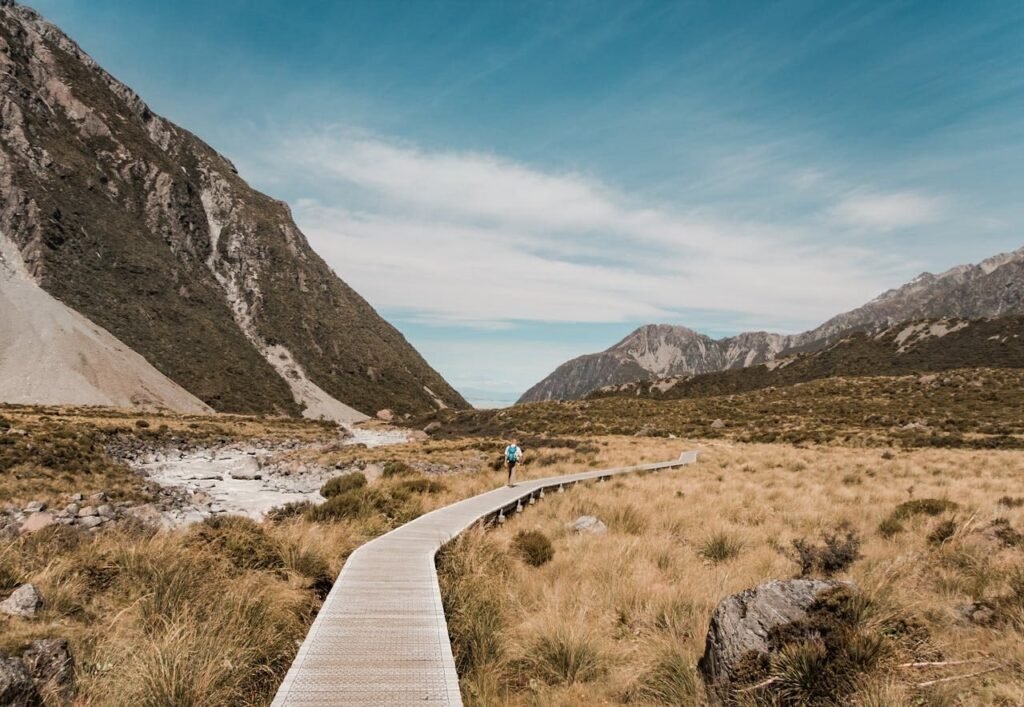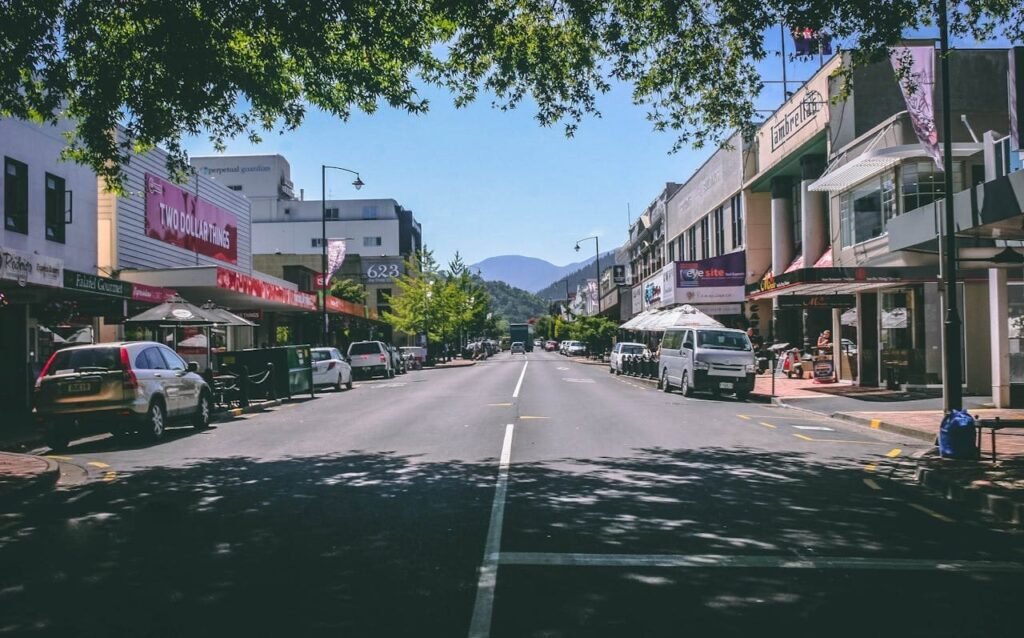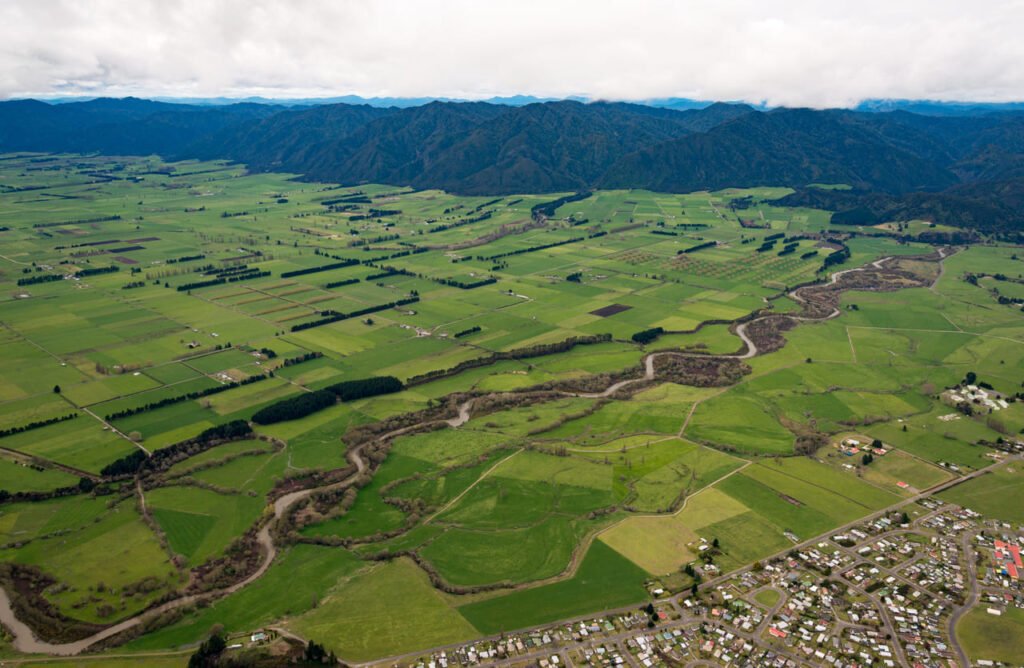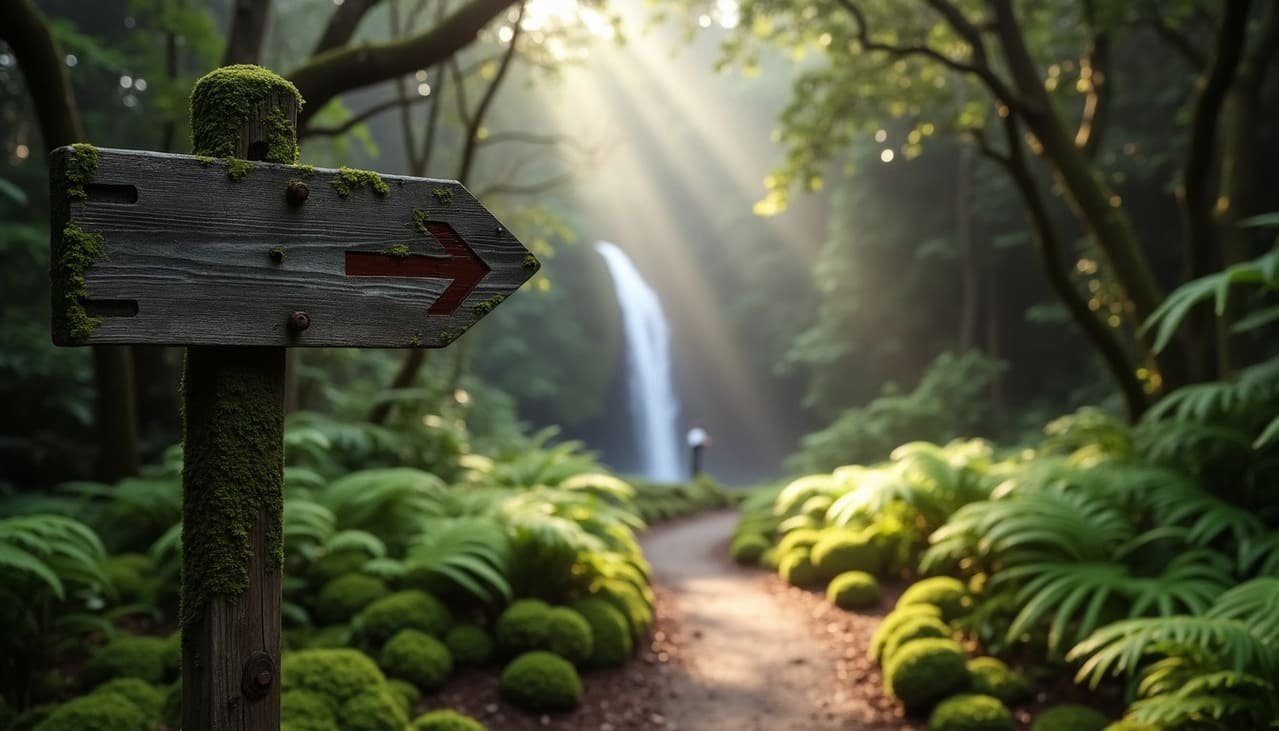New Zealand beckons with fascinating contrasts. Picture a country where sheep roam freely, outnumbering humans 12 to 1. This remarkable land pioneered commercial bungy jumping and brought the “Lord of the Rings” fantasy world to life. Most tourists endure 23+ hour flights and spend over $1,000 to travel to New Zealand and reach these attractions. The country’s true essence lies hidden from regular tourist routes.
New Zealand’s charm extends past the stunning Milford Sound fjords and enchanting Hobbiton. Your journey can lead to hidden gems that most visitors never get to see. The perfect New Zealand experience depends on what thrills you seek. The pristine beaches stretch along the 60-kilometer Abel Tasman Coastal Walk, and Rotorua amazes visitors with its geothermal wonders. The country’s untouched landscapes and Māori culture’s rich heritage reach way beyond the popular tourist spots. The question “Is New Zealand worth visiting?” has a clear answer – yes. The real magic happens when you step away from tourist crowds and embrace authentic experiences that make this island nation special.
Table of Contents
What Most Tourists See on a New Zealand Trip

Tourists from all over the world head to a few iconic spots when they visit New Zealand. These popular destinations show up everywhere on social media and travel blogs, and with good reason, too—they showcase the country’s most dramatic landscapes and cultural experiences. Let’s understand what makes these famous locations so special before we explore the road less traveled.
Queenstown, Hobbiton, and Milford Sound
New Zealand’s tourism “golden triangle” revolves around three breathtaking destinations that have become essential stops for first-time visitors.
Queenstown, New Zealand’s adventure capital, draws thrill-seekers worldwide. This stunning town next to Lake Wakatipu provides everything from bungee jumping and white-water rafting to jet boating and paragliding. The area also features scenic drives, world-class golf courses at Jack’s Point, Millbrook Resort, and The Hills. Wine enthusiasts can sample award-winning Pinot Noir in the famous Gibbston wine region.
The Lord of the Rings and The Hobbit films’ purpose-built movie set, Hobbiton, brings Middle-earth to life. A 12-acre movie set sits on a 1,250-acre sheep farm near Matamata on the North Island. Visitors can see authentic hobbit holes, the Green Dragon Inn, and detailed landscaping that creates a realistic Shire. Tours lead through vibrant Hobbit Hole doors and Bag End (Bilbo and Frodo Baggins’s home). Each tour ends with a complimentary drink from the Hobbit Southfarthing range.
Milford Sound fascinates visitors with its otherworldly beauty. This fjord in Fiordland National Park features dark waters and towering mist-covered mountains. Rudyard Kipling called it the “eighth wonder of the world”. The one-kilometer-high Miter Peak and magnificent waterfalls stand out, especially during rainfall, which happens often in one of Earth’s wettest places, receiving about seven meters annually. Lucky visitors might spot rare Fiordland Crested Penguins and friendly bottlenose dolphins.
Common Tourist Itinerary Overview
| Duration | Popular Route | Key Attractions | Best For |
|---|---|---|---|
| 10 Days | Auckland → Wellington → Queenstown | City of Sails, Cultural Capital, Adventure Hub | First-time visitors wanting highlights |
| 14 Days | Christchurch → West Coast → Milford Sound | Geothermal wonders, cultural experiences, and adventure activities | Nature and wildlife enthusiasts |
| 14 Days | Auckland → Rotorua → Christchurch → Queenstown | Geothermal wonders, cultural experiences, adventure activities | Diverse experiences across both islands |
| 21 Days | Auckland → Christchurch → Rotorua | Wine regions, comprehensive exploration | Food and wine lovers |
Most tourists follow similar patterns. They spend at least two nights in Queenstown and take a day trip to Milford Sound. Many visit Christchurch, the South Island’s largest city, and explore Rotorua’s geothermal areas. Two weeks gives enough time to see the country’s highlights, but three weeks or more lets you discover beyond the usual tourist spots.
These mainstream destinations show just a glimpse of New Zealand’s treasures. The country’s true magic lies in its hidden gems, waiting for adventurous travelers to discover them.
Why You Should Look Beyond the Usual Spots
New Zealand’s landscapes go beyond postcard-perfect scenes. They hide secrets that await curious travelers who step away from tourist hotspots. International visitor numbers are close to 4 million annually and might reach 10-13 million by 2050. This makes it the perfect time to think about exploring the road less traveled during your New Zealand trip.
Overcrowding and Missed Opportunities

Mass tourism’s effects are more and more visible at New Zealand’s most beloved spots. Popular areas like Queenstown can’t keep up – each local ratepayer faces 35 visitors annually. This gap leads to higher prices that often leave domestic travelers unable to match international tourists’ spending power.
Overtourism shows its marks across the country:
- Tourists line up like they’re at an amusement park at Roys Peak near Lake Wānaka. They wait for that “perfect wilderness shot” while dozens watch
- Cathedral Cove in Coromandel feels like a packed shopping mall instead of a natural wonder
- New Zealand’s busiest heliport sits at Franz Josef Glacier. Helicopters take off or land every minute in peak season.
These pressures eat away at what draws visitors here – “the sense of isolation, tranquility, and access to nature”. Tourism’s environmental impact gets less attention than other industries like agriculture, which raises concerns.
Sticking to the usual tourist spots means missing what makes New Zealand special. Remember: “nobody is going to travel to New Zealand to be closer to people! We travel there to be closer with nature and to share the experience with our loved ones and friends”.
A Detour to Stewart Island
Stewart Island (Rakiura in Māori, meaning “the land of glowing skies”) shows why going off the beaten path pays off. This island paradise sits just 30 kilometers south of the South Island across Foveaux Strait. Mass tourism hasn’t touched it yet.
“Only the most passionate of international adventurers have even heard of Stewart Island, let alone visited the far-flung destination”. People who make the trip find a genuine piece of New Zealand that few others see.
Stewart Island stands out because:
| Feature | Experience | Why It’s Special |
|---|---|---|
| Dark Sky Sanctuary | Witness the Aurora Australis | Southern-most Dark Sky Sanctuary in the world |
| Wildlife Abundance | See kiwi birds in the wild | Home to 20,000 kiwis that outnumber humans and are active day and night |
| National Park | Explore 280km of walking tracks | A glimpse into a simpler, slower lifestyle in rhythm with the sea and tides |
| Island Culture | Experience “island pace” | A glimpse into a simpler, slower lifestyle in rhythm with sea and tides |
Stewart Island ranks among the world’s best spots to see the Aurora Australis from March to August. The island’s 400 residents welcome visitors while keeping their proud, independent spirit.
Places like Stewart Island capture the essence of New Zealand travel. You’ll find natural beauty, unique wildlife, and a lifestyle that helps you reconnect with what matters. A local describes it as “a special experience…attuned to the natural world of bush and beach”.
Hidden Places That Will Surprise You
New Zealand’s true magic lies beyond the tourist spots. Raw, authentic, and easy to reach, these hidden spots show why New Zealand should be your next destination. They give you adventures that most travelers never get to see.
The Catlins – Waterfalls and Wildlife

The Catlins region sits quietly in the South Island’s southeastern corner. This area has some of New Zealand’s most breathtaking waterfalls surrounded by ancient forests. The stunning Purakaunui Falls cascade 20 meters in three distinct tiers, making it New Zealand’s most photographed waterfall. McLean Falls reaches 22 meters high and rewards climbers with amazing views from the top.
Wildlife thrives along the Catlins coast. You might spot Hector’s dolphins, the world’s smallest and rarest dolphins, playing in Porpoise Bay. The area’s sea lions are the world’s rarest, with all but one of these colonies living on the mainland. Yellow-eyed penguins, fur seals, and countless birds make this place a wildlife lover’s dream.
Murupara – Gateway to Te Urewera

Murupara opens the door to Te Urewera, the North Island’s largest remaining native forest. This small former timber town’s population is mostly Māori and has four marae (meeting grounds). You’ll get a real taste of Māori culture here.
Te Urewera showcases stunning mountain landscapes, lakes, and ancient forests. Lake Waikaremoana formed 2,200 years ago from a massive landslide and lets you hike, kayak, and fly-fish. Almost every native New Zealand bird species lives here. The Tūhoe people, known as the “Children of the Mist,” have called this land home for centuries.
Farewell Spit – The Longest Sandbar

Farewell Spit (Onetahua), the world’s longest natural sandbar at 34 kilometers, stretches from the South Island’s northern tip. This amazing formation has 25 km of stable land plus 5 km of moving sand spit.
This special place has been a bird sanctuary since the 1930s and became an important international wetland in 1976. More than 90 bird species live here. Bar-tailed godwits, knots, and turnstones fly 12,000 kilometers each northern autumn to spend summer in this sanctuary. You’ll also see a gannet colony and a historic lighthouse from 1870.
Hidden vs. Popular Destinations
| Hidden Gem | Comparable Popular Spot | Why Visit Instead |
|---|---|---|
| The Catlins | Milford Sound | Fewer crowds, more authentic wildlife encounters |
| Murupara/Te Urewera | Rotorua | More immersive cultural experience, pristine wilderness |
| Farewell Spit | Abel Tasman | Extraordinary birdwatching, unique geography, fewer tourists |
These hidden treasures show why New Zealand stands among the world’s most amazing places to visit.
Unexpected Cultural and Historical Finds
New Zealand’s historical treasures hide behind its natural wonders, but they give you just as many reasons to visit New Zealand. Ancient rock drawings tell stories of the first inhabitants, while abandoned settlements echo with memories of gold fever. These cultural sites add a rich layer to your New Zealand adventure.
Forgotten Gold Mining Towns
The South Island holds remnants of New Zealand’s gold rush era (1852-1953) that wait for curious travelers to find them. The Otago gold rush of 1861 changed the young colony and made Dunedin grow faster into New Zealand’s largest city. These once-bustling communities have turned into captivating ghost towns.
Waiuta stands out as the country’s best-preserved ghost town. This remote settlement was home to over 600 people until 1951 and had facilities that bigger towns wished they had. The mine produced nearly 750,000 ounces of gold, worth about USD 1.60 billion today.
What makes these towns worth visiting?
- Original streets with traces of daily life from the past
- Massive mining equipment that still stands where it was left
- A haunting silence in places that once buzzed with life
Many gold rush sites now serve as historic attractions. DOC has brought the old schoolmaster’s house and bakehouse back to life in Macetown. Bendigo Historic Reserve protects valuable remnants of quartz mining operations and lets you learn about this colorful chapter of New Zealand’s history.
Māori Rock Art in South Canterbury
South Canterbury has hundreds of Māori rock art sites that show some of New Zealand’s earliest cultural expressions. Artists created these drawings on limestone surfaces using a soot mixture that connects us to the island’s first inhabitants.

The Timaru District has more studied Māori rock art sites than anywhere else in New Zealand. Early Māori used the area’s waterways to travel and left their drawings in limestone caves and overhangs that gave them shelter.
Ngāi Tahu, the South Island’s Māori tribal group, has found 761 rock art sites within their territory. Dating these works is tricky, but archaeologists think they come from the first 500 years of human life in New Zealand.
Te Ana Māori Rock Art Center in Tīmaru gives you a great way to understand these paintings through hands-on exhibits. Tours led by Ngāi Tahu descendants teach you about these ancestral treasures that most visitors never find—making it one of the most unique cultural experiences in where to visit in New Zealand.
Tips for Discovering New Zealand’s Secret Side
New Zealand’s authentic side awaits travelers who plan well and tap into local wisdom. Is New Zealand worth visiting beyond its famous attractions? Absolutely—you need to know where to find its hidden treasures.
Travel to New Zealand in Shoulder Seasons
Smart timing makes all the difference when you want to see pristine landscapes without crowds. The best times are October-November (spring) or March-April (autumn). These months offer great weather with far fewer tourists around.
These benefits make shoulder season travel worth it:
- You’ll pay up to 30% less for places to stay
- Car rentals cost less, and you’ll find more choices
- Locals are more relaxed and chatty when they’re not swamped with visitors
Autumn brings stunning colors to Central Otago. The cooler weather makes hiking through untouched wilderness much more pleasant than summer’s heat.
Use Local Forums and Visitor Centers
Online communities are a great way to get tips about genuine hidden spots. Reddit’s r/NewZealand and DOC community boards help you connect with locals who love sharing their secret places.
Small regional visitor centers often know more about local spots than big tourism offices. The core team lives in the area and can point you to places you won’t find in regular guidebooks.
Rent a Campervan for Flexibility

The best way to see everything when you travel to New Zealand is to explore remote spots at your own pace. A campervan lets you do just that and solves the problem of where to stay when you’re far from cities.
Related read: Best Solar-Powered Travel Gadgets for 2025
Think over whether you need a self-contained vehicle (with toilet facilities) for your trip. These vans let you stay at thousands of freedom camping spots across the country.
Tools and Resources for Offbeat Travel
| Resource Type | Recommendation | Why It’s Valuable |
|---|---|---|
| Mobile App | CamperMate | Up-to-the-minute data on freedom camping spots, facilities, and local spots |
| Website | Rankers.co.nz | Real reviews from travelers, not paid listings |
| Book | “Off the Beaten Track New Zealand” | Shows 100+ hidden spots with their history |
| Local Tool | Community Facebook groups | Local tips about conditions and insider spots |
These strategies will help you find authentic reasons to visit New Zealand that most tourists never see.
So, Why Travel to New Zealand?
New Zealand’s magic goes way beyond its postcard attractions. Queenstown’s adventure sports and Hobbiton’s whimsical charm deserve their fame. The country’s heart beats strongest in its hidden corners, though. Most travelers miss the authentic New Zealand found in Stewart Island’s starry skies, The Catlins’ untouched waterfalls, and Farewell Spit’s extraordinary bird sanctuary.
Mass tourism has changed many peaceful landmarks into crowded hotspots. Growing lines at Roys Peak and helicopter traffic above Franz Josef Glacier are proof of this shift. All the same, you’ll find countless secluded beaches, ancient forests, and cultural treasures untouched if you step off the usual paths.
The experience gets richer with historical sites. Gold mining ghost towns across the South Island tell stories that shaped this young nation. The Māori rock art sites in South Canterbury show glimpses of indigenous history that existed centuries before Europeans arrived.
Should you visit New Zealand? That’s a soaring win of a yes, especially if you look beyond the obvious spots. Get your sense of adventure ready, rent that campervan, ask locals for tips, and mix famous spots with hidden gems in your plans. You’ll find more than just amazing landscapes. The warmth of Kiwi hospitality and deep connection to nature make this remote island nation one of a kind.
FAQs Related to Travel to New Zealand
What are some hidden gems in New Zealand that most tourists miss?
The Catlins region in the South Island offers spectacular waterfalls and wildlife viewing opportunities. Murupara serves as a gateway to Te Urewera, New Zealand’s largest area of native forest. Farewell Spit, the world’s longest natural sandbar, provides extraordinary birdwatching experiences.
When is the best time to visit New Zealand to avoid crowds?
The shoulder seasons of October-November (spring) and March-April (autumn) are ideal for visiting New Zealand. You’ll enjoy favorable weather, reduced tourist numbers, and potentially lower prices for accommodations and rentals.
Are there any unique cultural experiences in New Zealand beyond the typical tourist attractions?
Yes, you can explore Māori rock art sites in South Canterbury, which represent some of New Zealand’s earliest cultural expressions. Additionally, visiting forgotten gold mining towns like Waiuta offers a fascinating glimpse into the country’s gold rush era.
Is New Zealand as pristine and “100% pure” as advertised?
While New Zealand boasts stunning natural beauty, it faces environmental challenges like many countries. Some areas have issues with agricultural runoff affecting water quality. However, there are still many pristine locations, especially in less-visited regions, where you can experience New Zealand’s renowned natural splendor.


Leave a Comment